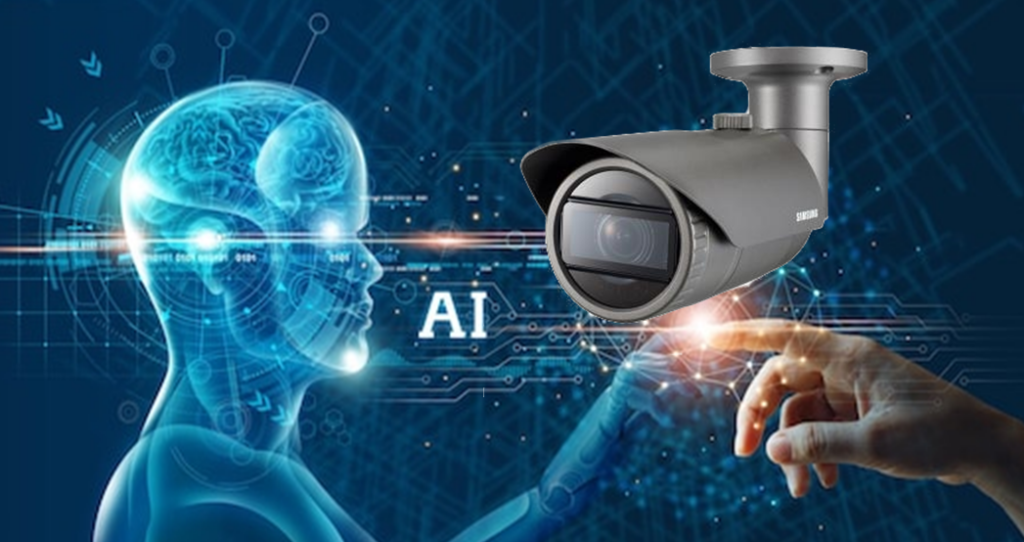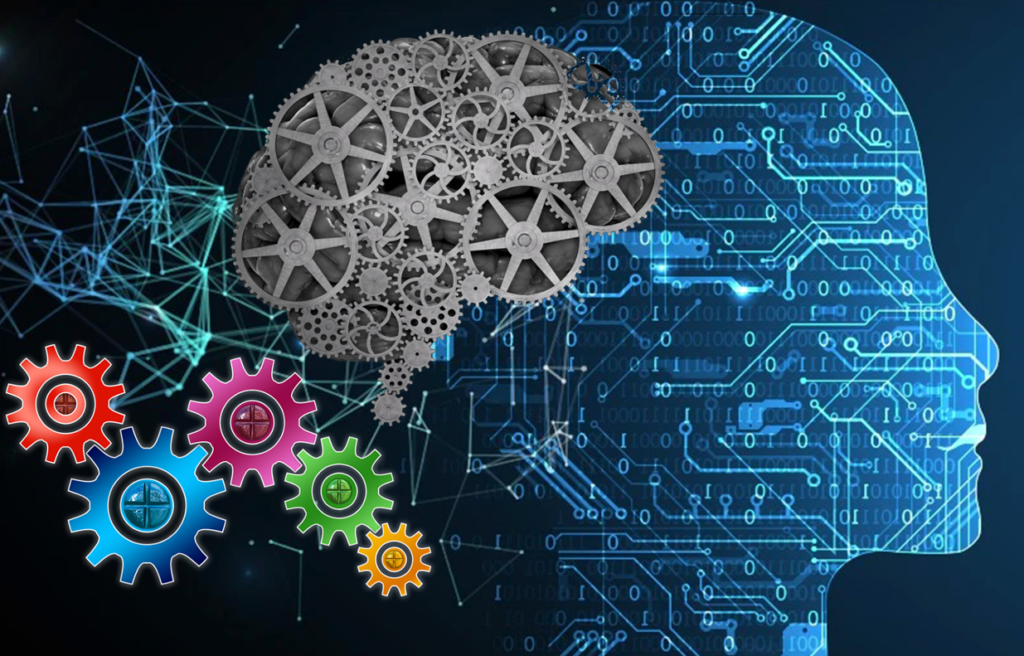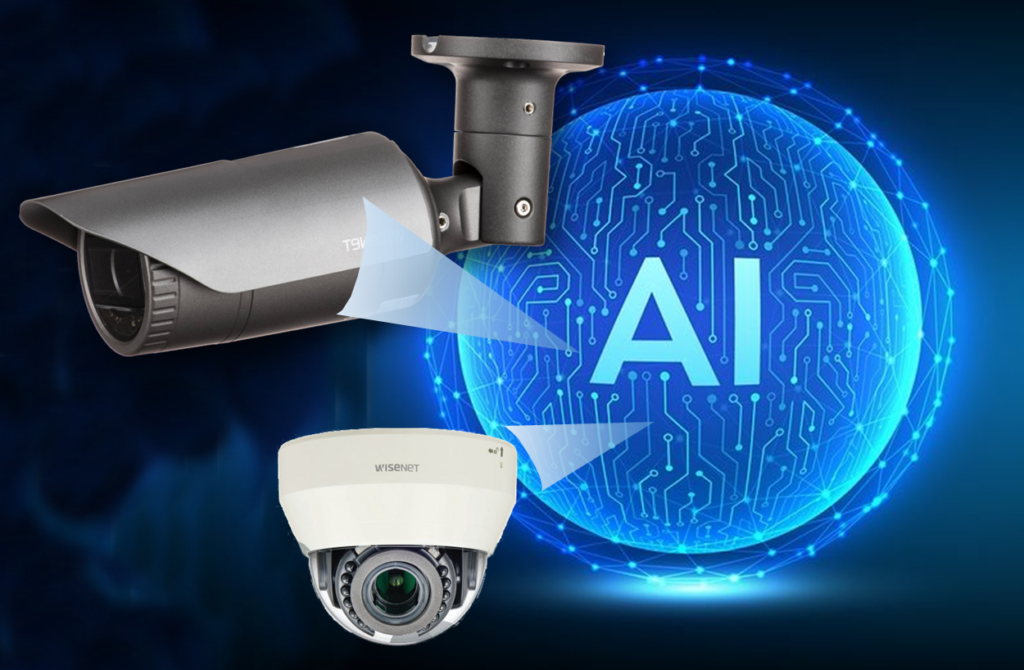Artificial Intelligence has Changed the Way We Use IP Camera Systems

Today’s buzzword is AI (Artificial Intelligence). It is a game changer for IP camera systems because AI-equipped cameras can instantly notify security personnel about critical events, enabling faster response times and minimizing potential risks. The IP camera system is transformed from a review of past events to an instant reaction system.
What is Artificial Intelligence
The AI revolution can be attributed to the collective efforts of numerous researchers, scientists, and innovators over several decades. It is hard to attribute it to a single individual, as AI development has been a collaborative and evolving process involving contributions from many individuals and organizations. Since the development of the digital computer in the 1940s, it has been demonstrated that computers can be programmed to carry out very complex tasks—such as discovering proofs for mathematical theorems or playing chess—with remarkable proficiency.
AI is an advancement in computer capability and is defined as the ability of a computer to perform tasks associated with intelligent beings. The objective of AI development is to create systems endowed with the intellectual processes characteristic of humans, such as the ability to reason, discover meaning, generalize, or learn from experience.
Types of Artificial Intelligence

There are three primary levels of AI capabilities.
Artificial Narrow Intelligence (ANI)
Examples of narrow intelligence include Apple Siri, some AI surveillance cameras and software, and the IBM Watson supercomputer. Other examples include IP cameras and Video Management Software (VMS) that have been enhanced with AI.
Artificial General Intelligence (AGI)
This level of intelligence can learn, think, and perform a wide range of general functions that are similar to humans. AGI would be able to understand, learn, and apply knowledge across a wide range of tasks and domains. Be comforted that achieving this level of AI is still largely theoretical and has not been realized yet.
Artificial Super Intelligence (ASI)
Superintelligent AI surpasses human intelligence in almost every aspect. It would possess cognitive abilities far beyond what any human could achieve. Superintelligent AI remains speculative, and there is an ongoing debate about whether it is even possible to develop or control such an entity.
Comparison of Recorded Video to Instantaneous Notification
The latest IP cameras have been augmented with ANI capability. This has dramatically changed the security and safety levels provided by IP Camera Systems. Here’s a comparison of traditional IP Camera Systems to AI-enhanced systems.
| Recorded Video | Threat Detection | |
| Purpose | Reviewing recorded video involves analyzing previously captured footage to identify past events, incidents, or patterns. It is typically used for investigative purposes, post-event analysis, and gathering evidence. | Reacting to immediate threats involves monitoring live video feeds in real-time to detect and respond to ongoing security incidents or potential breaches. It focuses on preventing or mitigating damage as events unfold. |
| Time Frame | The recorded video is reviewed after an event has occurred. It is not meant for real-time monitoring or immediate response to ongoing situations. | This approach notifies security personnel that immediate action and attention is required. It is intended to address situations as they happen or even before they escalate. |
| Objective | Recorded video review is valuable for identifying crime suspects, analyzing the events leading up to an incident, and gathering evidence for legal or internal investigations. | Reacting to immediate threats is crucial for situations like intrusions, unauthorized access attempts, suspicious behaviors, or emergencies. It allows security personnel to take timely action to minimize risks. For example, it can detect if a person falls, providing immediate assistance. |
| Advantages | This approach allows for a comprehensive examination of events, offering a more detailed and accurate understanding of what transpired. It also provides an opportunity for identifying trends and making informed decisions for future security measures. | Immediate threat response enables swift intervention, reducing the potential impact of security breaches or incidents. It’s essential for maintaining a proactive security posture and safeguarding assets and individuals in real time. |
| Limitations | Reviewing recorded video does not provide immediate insights or address ongoing security threats. Additionally, relevant footage might need to be located among a large volume of recorded material. | This approach requires trained personnel and efficient communication systems to respond promptly. False alarms can also occur, which must be verified before action. |
Summary of IP Camera Systems

Reviewing recorded videos and reacting to immediate threats are effective security strategies. While reviewing recorded video is valuable for investigations and insights, responding to urgent threats ensures proactive security measures to prevent or address incidents in real-time. Integrating both approaches contributes to a comprehensive and robust security posture for organizations.
Summary of the IP Camera with AI
In essence, AI-powered IP cameras revolutionize how we approach security and surveillance. They bring efficiency, accuracy, and automation to the forefront, allowing organizations to proactively address security challenges and make more informed real-time decisions. This combination of technology and intelligence sets a new safety and operational excellence standard.
To learn more about how AI is used with IP camera Systems, read Detecting Threats using AI and IP Camera Systems.
If you would like help selecting IP camera systems with AI, please get in touch with us at 1-800-431-1658 in the USA or 914-944-3425 everywhere else, or use our contact form.